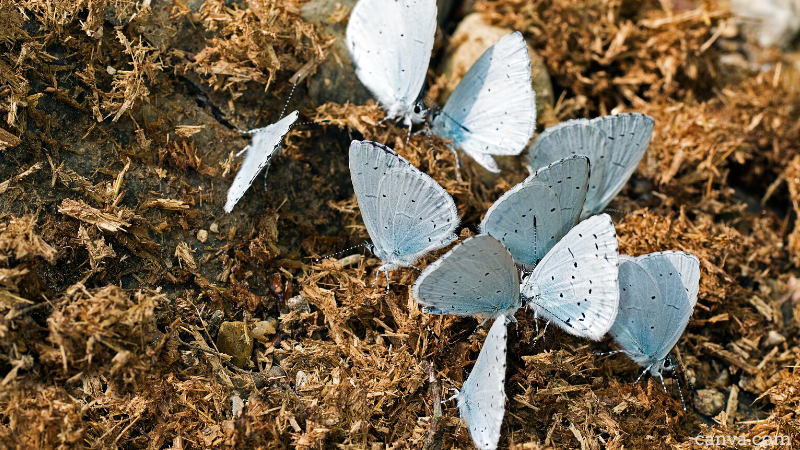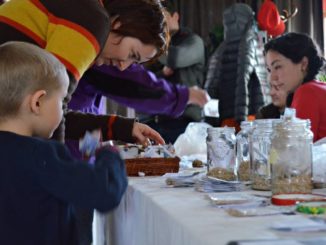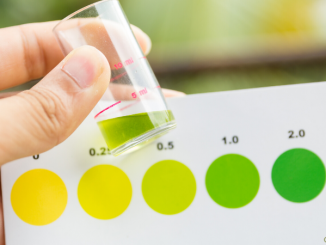By Diego Garcia-Vega (Intern, Agriculture and Biodiversity, IDDRI.) and Pierre-Marie Aubert coordinator IDDRI.
Agriculture occupies half of the ice-free terrestrial land and has been the major driver of biodiversity loss over the five last decades through two main phenomena:(1) its geographical expansion, which has destroyed rich biodiversity areas; and its intensification through the growing recourse to external inputs and the simplification of landscapes, which have greatly affected a wide range of taxa both within and outside of agricultural fields. The question of which agricultural and food systems we need to halt these losses and restore biodiversity wherever possible, while at the same time ensuring food security and offering options to mitigate, and adapt to, climate change has therefore to be addressed head-on. While both academic and policy debates tend to focus on how to further intensify agricultural landscapes to spare natural lands for natural biodiversity conservation and carbon sequestration, this Brief elaborates on a literature review of recent publications to argue that equal attention should be paid to the protection and restoration of biodiversity within agricultural landscapes, most notably for the role it plays as a critical production factor.
While there is a critical need to conserve natural biodiversity, agro-biodiversity needs to be protected as well for its magnitude and its role in providing major ecosystem services to humans, in particular for food production. Policies should encourage the adoption of agricultural systems that are positive for biodiversity. Those are systems with complex crop rotations and high levels of crop diversity, a minimum of 10 to 20% of semi-natural area per square kilometer of farmland, and total synthetic inputs below critical loads for biodiversity notably through high efficiency.
Measures will widely differ countries. OECD and high-yielding countries must make the greatest total reductions in inputs and increases in landscape heterogeneity; with increases in efficiency being most critical in non-OECD countries.
Following an ecological intensification pathway, low-yielding countries may still be able to moderately increase inputs for yields to follow, but these should stay below critical loads and farmland heterogeneity should be protected.
Transitioning to high agro-biodiversity farming systems while stopping any further agricultural expansion requires to keep total demand of agricultural products as low as possible. This implies greatly reducing animal product consumption, in particular from affluent and emerging societies, and from intensive livestock systems whose feed inputs compete with food for humans, as well as reducing food waste and loss to the maximum extent possible.
Other policies to facilitate such a transition include: (i) a reform in the agricultural trade system to reverse the high specialization process that has occurred over time based on a comparative advantage paradigm; and (ii) significant public supports to develop breeding/selection programmes for a much greater diversity of crops, including in particular locally adapted crops, in a context where 9 crops today account for over 65% of all crop production worldwide.
On the Importance of Conserving Agrobiodiversity 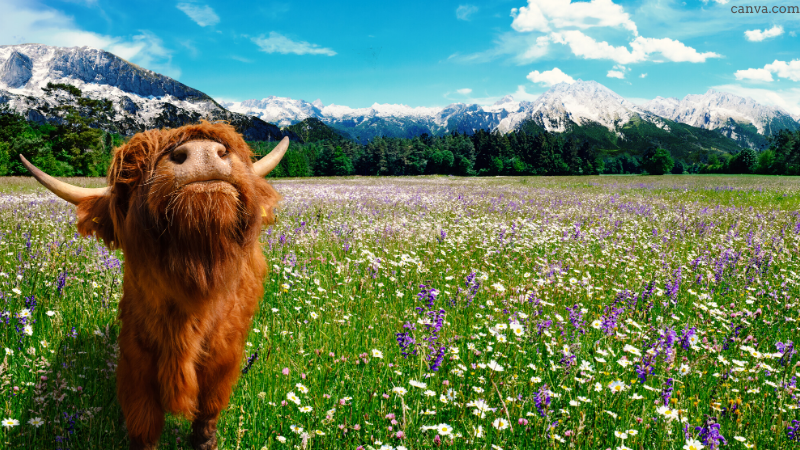
Natural biodiversity refers to the variability of natural ecosystems (i.e. not managed by humans) and the populations and species they host, which includes most rare, endemic and endangered species. Primary and mature secondary vegetation (i.e. undisturbed and those left to natural succession) generally host the highest levels of total biodiversity among all land use types. Habitat loss, overexploitation, climate change, pollution, and invasive species are causing rapid loss of this biodiversity.
On the other hand, agro-biodiversity includes the diversity of the cultivated crop and livestock species, breeds and varieties, as well as all the non-harvested species that occupy and exploit the various parts of agricultural landscapes at some stage of their life cycles.(2) The composition of these species communities differs from those of natural ecosystems, and have in general lower total biodiversity levels. However, productive landscapes (croplands, pastures and managed forests) and their species communities represent a significant part of the biosphere and those on which humans most directly rely. Biodiversity in farmland habitats is also rapidly dropping, mainly as a result of the industrial agricultural intensification that has been underway since the 1960s.(3)
Given the different species communities that compose these two types of biodiversity, and their different habitat requirements and drivers of loss, the management practices needed to conserve and restore them also differ. While the debate has so far become polarised into those supporting a more eco-centric view focused on the conservation of wild habitats, and those putting forward a more anthropocentric view calling for conserving the nature that provides essential services to humans (4) this Brief argues that attention should be paid to both forms of biodiversity. And while there is no debate on the need to further limit agricultural expansion and restore degraded ecosystems, the rationale for conserving and restoring agro-biodiversity must be made clearer. It stands on two main pillars: its existence value, and its role in maintaining the productive capacity of agroecosystems in the long run.
Regarding its existence value, some regions of the world where natural landscapes have been transformed to agriculture for up to millennia now host rare species communities adapted to these environments. More generally, semi natural patches within agricultural landscapes frequently host rare wild species.(5) A good example of this are European grasslands and the so-called “high nature value farming systems”.(6) Further, agricultural landscapes that are hospitable to biodiversity create landscape connectivity (i.e. habitat, feeding resources and nursing ground to transitory species moving between natural habitats), which can alleviate the ‘ecological debt’ of natural habitat fragmentation over the long term and facilitate the adaptation of species communities to the rapidly changing climate.(7)
An accumulating body of evidence also proves that farmland biodiversity is a production factor that can directly stabilise and increase crop yields through the provisioning of ecosystem services such as pollination, biological pest control, nutrient recycling, water regulation, and through synergies of diverse communities.(8) As such, nurturing this agro-biodiversity prevents from production losses through, for instance, increased incidence and impacts of pests, and even important non-linear losses from for example the loss of pollinator groups, which threatens the productivity and even viability of our food (35% of global crops and 87% of the top fruit, vegetable and seed crops are dependent on animal pollination, and many more benefit from it),(9) or of soil biodiversity, which maintains the long-term production capacity of lands. Such contributions will be decisive in this time of undergoing and accelerating global environmental changes, to adapt and build resilience of food production—it has become increasingly clear that diverse agro-ecosystems are more resilient to both slow and acute changes.(10)
The Necessity to Redesign Farming Systems 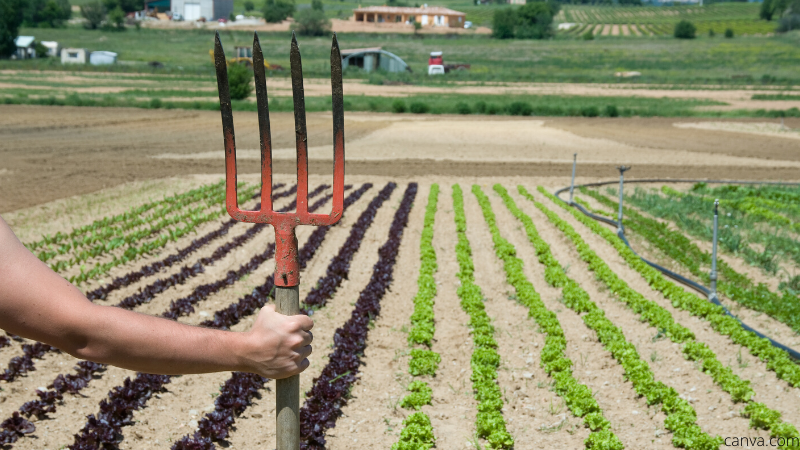
The need to enhance agro-biodiversity calls for a transformation of farming systems. A growing body of empirical evidence suggests that the levels of biodiversity contained within agricultural landscapes are largely determined by two main factors:11 the complexity of the landscape (i.e. areas of semi-natural vegetation, crop diversity and complex rotations); and the absolute level of synthetic inputs (i.e. fertilisers and pesticides). Maximising the heterogeneity of agricultural landscapes creates more habitats and resources that a wider range of taxa can exploit, while minimising and improving the use of synthetic inputs is critical to allowing rich and complex species communities to be restored in farms, and to reducing their spill-over far beyond field borders to remote natural areas. These factors are also interlinked, and indeed interdependent: reducing the input of synthetic fertilisers requires adopting more complex crop rotations that include leguminous crops, and increasing the share of semi-natural vegetation in farms increases biological pest control that allows reducing pesticide inputs.
While thresholds have been proposed for maximum levels of inputs and minimum levels of landscape complexity, what they mean for agricultural transition pathways greatly differs across regions given the complexity and variability of species communities, farming systems, pedoclimatic conditions and land-use histories. Empirical evidence on the relationships between management practices and biodiversity levels is also mainly available for the richer countries of the OECD, while data is lacking from across most of the globe. With that in mind, the following lines put forward general guidelines distinguishing between three main types of contexts.
Countries of the OECD have among the highest yields and most efficient farming systems (i.e. highest physical returns per inputs); yet their very high absolute input levels also produce some of the gravest pressures on biodiversity. Nutrient pollution from excess fertiliser application affects most agricultural landscapes in these countries, and nitrogen fertiliser use would have to be reduced by an average 40% across European farmlands at current efficiencies to stay below critical levels for biodiversity.12 While further increasing nitrogen use efficiencies is possible and must be pursued, notably by replacing widespread use of synthetic mineral fertilisers with more leguminous crops in rotations, most efforts have to be put into drastically reducing total fertiliser use. Moreover, while regulations exist for pesticides in these countries, they are still being used at high levels that undermine biodiversity,13 and particularly harmful compounds are still being widely deployed. Banning those compounds proven to be toxic to farmland taxa, reducing total pesticide inputs, improving their characteristics (selectivity, efficiency, susceptibility to drift or run off in air and water), and training and financing farmers on best practices, would dramatically reduce the impacts of pesticides on biodiversity.
Agricultural landscapes across these regions have also followed an important trend towards specialisation and simplification in the past half century, with semi-natural vegetation patches being lost in the process and complex crop rotations being replaced with synthetic inputs. Recovering a minimum of between 10 and 20% of semi-natural areas (e.g. natural grasslands) and agro-ecological infrastructures (e.g. hedges, trees, ponds, flower strips) across every square kilometer of farmland has been proposed as a threshold to allow biodiversity to repopulate agricultural landscapes, and to benefit from the direct services they provide to agricultural production.14 Finally, adopting higher crop diversity and more complex crop rotations would allow for the lower external inputs, and would notably restore soil biodiversity.(15) Other countries like China, Egypt or Argentina achieve similar high yields but at much lower efficiencies, resulting in even worse nutrient pollution (16) and with over half of pesticide inputs being in excess and not contributing to yields in many farms.(17) Greatly improving nitrogen and pesticide use efficiencies across these regions would therefore significantly alleviate agriculture’s pressures on biodiversity. But even then, largely reducing absolute levels of inputs remains most necessary and critical. Further, agricultural landscapes across these regions have also been following a long-term trend towards specialisation and simplification, and have additionally resulted in the consolidation of very large farms. Therefore, recovering 10-20% areas of semi-natural vegetation at fine scales and more complex crop rotations is necessary as well, in addition to a special focus on reducing field sizes in order to enhance the heterogeneity of agricultural landscapes.
Finally, the situation of low-yielding countries is equally an important challenge. Inputs use levels are much lower across these regions, and there are consequently generally a higher crop diversity and more complex landscapes and crop rotations. However, input uses are most rapidly growing in some of these countries and they are used at low efficiencies, and landscapes may consequently follow the simplification path experienced in high-yielding countries. An ecological intensification pathway in many of these countries would enable to increase nutrient inputs for yields to follow while attaining a high level of efficiency and maintaining complex rotations and significant service-providing semi-natural vegetation patches.(18) Further research is also needed to better characterise how biodiversity and production respond to management practices across the wider diversity of systems and pedoclimatic conditions represented by these countries.
Transforming farming systems across the globe to conserve and restore biodiversity in agricultural landscapes may affect crop yields, perhaps most directly mediated through changes to nutrient inputs: most probably stabilising in OECD and other high-yielding countries—where yields are close to their maximum agronomic potential(19) —and increasing in low-yielding countries. However, impacts on yields will directly depend on the input use efficiencies attained, which increase in more complex crop rotations, and on the crop diversification that accompanies the transition to low inputs, which can change the total yields produced by the system (i.e. looking at the addition of all crops’
production rather than at individual crop yields).
A Set of Conditions to Enable the Transition

First, adopting the above-mentioned principles to redesigning agricultural landscapes would only be positive for biodiversity if accompanied by a strict end put to agricultural expansion. Given the expected population and consumption growth up until at least 2060, and the limit and the already observed limit to yield increase in many OECD countries, the only way to achieve this will be by recovering the calories that are currently lost in the system. This implies first and foremost reducing the feed-food competition and, more broadly, moving away from animal production systems that inefficiently convert feed into food.
This, in turn, means a great reduction (at least by 50%) in the consumption of animal products in countries where it is highest (namely OECD countries). Such a dietary shift would also be aligned with existing dietary references, given that current levels of protein intakes in most OECD countries are roughly twice as much as what is needed to cover nutritional needs.(20) Reducing food waste and loss is also critical in this respect, with measures varying across the globe as it happens at different stages of the food supply chain—a reduction of as much as 75% of food waste and losses worldwide is considered necessary.(21)
Second, diversifying agricultural landscapes through more complex crop rotations will require a move away from the “comparative advantage” paradigm. The agricultural commodity trading system that has developed under this paradigm has indeed greatly contributed to the overspecialisation of most countries on the production of certain crops or cropping systems for which they are most competitive and, in turn, of their agricultural landscapes.(22) And while affluent countries have managed to maintain a diverse supply thanks to international trade, this specialisation process has led least developed countries to greatly reduce the diversity of their “national food basket”. There is hence a need to design agricultural trade rules that would be compatible with the production of high crop diversity in both importing and exporting countries, and that would prevent from mechanically leading to a specialisation on the most competitive productions. Such a change in the trading system would have to be accompanied with a much needed repurpoposing of agricultural subsidies, as the OECD has called for over the last few years.(23)
Third, agriculture knowledge and innovation systems need to embrace the need for higher complexity in cropping systems and develop breeding and selection programmes for crops that are today almost “orphan species”; in particular leguminous crops but also a wide range of species that are adapted to diverse pedoclimatic contexts. This is particularly critical at a moment where a dominant share of all R&D investments (public and private) is made on only 5 crops (maize, wheat, rapeseed, soybean, rice) and that only 9 crops account for more than 65% of total crop production worldwide.(24) But this will not happen without strong public incentives and effort, given the limited return on investment such selection programmes are likely to generate due to the more limited market sizes for specific crops.
By Diego Garcia-Vega (Intern, Agriculture and Biodiversity, IDDRI.) and Pierre-Marie Aubert coordinator IDDRI. Pierre-Marie Aubert leads the initiative on Public Policies for European Agriculture. His activities focus on interactions between agricultural development, food security and biodiversity protection at three different levels: national, regional and international. This article was originally published as a policy brief on IDDRI’s website. A hyperlinked PDF of this article is available at this link.
References
1 IPBES (2019). Global Assessment Report on Biodiversity and Ecosystem Services Intergovernmental Science-Policy Platform on Biodiversity and Ecosystem Services.
2 FAO (2019). The State Of The World’s Biodiversity For Food And Agriculture. Rome, J. Bélanger & D. Pilling (eds.). FAO commission on genetic resources for food and agriculture, 572 p.
3 IPBES (2019). Global Assessment Report on Biodiversity and Ecosystem Services Intergovernmental Science-Policy Platform on Biodiversity and Ecosystem Services.
4 Immovilli, M. and Kok, M. (2020). Narratives For The ‘Half Earth’ And ‘Sharing The Planet’ Scenarios: A Literature Review. [online] The Hague, the Netherlands: PBL Netherlands Environmental Assessment Agency.
5 Wintle, B., et al. (2018). Global synthesis of conservation studies reveals the importance of small habitat patches for biodiversity. Proceedings of the National Academy of Sciences, 116(3), pp.909-914.
6. Strohbach M.W., Kohler M.L., Dauber J., et al. (2015). High Nature Value farming: From indication to conservation. Ecological Indicators, 57, 557-563.
7 Kremen, C. and Merenlender, A. (2018). Landscapes that work for biodiversity and people. Science, 362(6412).
8 Dainese, M., Martin, E., Aizen, M. et al. (2019). A global synthesis reveals biodiversity-mediated benefits for crop production. Science Advances, 5(10).
9 Aizen M.A., Aguiar S., Biesmeijer J.C. et al. (2019). Global agricultural productivity is threatened by increasing pollinator dependence without a parallel increase in crop diversification. Global Change Biology, 00, 1-12.
10 Bommarco, R., Kleijn, D. and Potts, S. (2013). Ecological intensification: harnessing ecosystem services for food security. Trends in Ecology & Evolution, 28(4), pp.230-238.
11 Billeter, R., Liira, J., Bailey, D. et al. (2008). Indicators for biodiversity in agricultural
landscapes: a pan-European study. Journal of Applied Ecology, 45(1), pp.141-150.
12 Vries, W. and Schulte-Uebbing, L. (2020). Required Changes In Nitrogen Inputs And Nitrogen Use Efficiencies To Reconcile Agricultural Productivity With Water And Air Quality Objectives In The EU-27. Colchester, United Kingdom: International Fertiliser Society.
13 Geiger, F., Bengtsson, J., Berendse, F. et al. (2010). Persistent negative effects of pesticides on biodiversity and biological control potential on European farmland. Basic and Applied Ecology, 11(2), pp.97-105.
14 Garibaldi, L., Carvalheiro, L., Leonhardt, S. et al. (2014). From research to action: enhancing crop yield through wild pollinators. Frontiers in Ecology and the Environment, 12(8), pp.439-447.
15 Lechenet M., et al. (2017). Reducing pesticide use while preserving crop productivity and profitability on arable farms. Nature Plants, 3 (3), 17008.
16 Lassaletta, L., Billen, G., Grizzetti, B. et al. (2014). 50 year trends in nitrogen use efficiency of world cropping systems: the relationship between yield and nitrogen input to cropland. Environmental Research Letters, 9(10), p.105011.
17 Pretty, J. and Bharucha, Z. (2015). Integrated Pest Management for Sustainable Intensification of Agriculture in Asia and Africa. Insects, 6(1), pp.152-182.
18 Tittonell, P. (2014). Ecological intensification of agriculture—sustainable by nature. Current Opinion in Environmental Sustainability, 8, 53-61.
19 Mueller, N., Gerber, J., Johnston, M. et al. (2012). Closing yield gaps through nutrient and water management. Nature, 490(7419), pp.254-257.
20 Godfray H.C.J., et al. (2018). Meat consumption, health, and the environment. Science 361 (6399), eaam5324.
21 Springmann M., Clark M., Mason-D’Croz D. et al. (2018). Options for keeping the food system within environmental limits. Nature, 562 (7728), 519-525.
22 Aguiar S., Texeira M., Garibaldi L.A. et al. (2020). Global changes in crop diversity:
Trade rather than production enriches supply. Global Food Security, 26, 100385.
23 Mamun A., Martin W. & Tokgoz S. (2019). Reforming agricultural support for improved environmental outcomes. IFPRI working paper.
24 FAO (2019). The State Of The World’s Biodiversity For Food And Agriculture. Rome, J. Bélanger & D. Pilling (eds.). FAO commission on genetic resources for food and agriculture, 572 p.
More
UK | Chapter 3: Preserving and Enriching the Natural Environment
Rural Dialogues | Peasants of Nature – French Initiative Reconciles Agriculture & Biodiversity
High Nature Value Farmland (HNVf) – rewarding farmers for biodiversity

